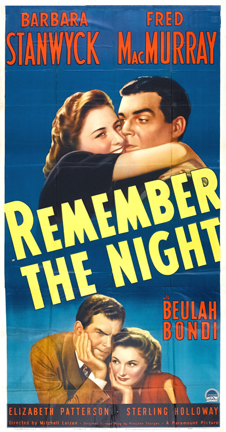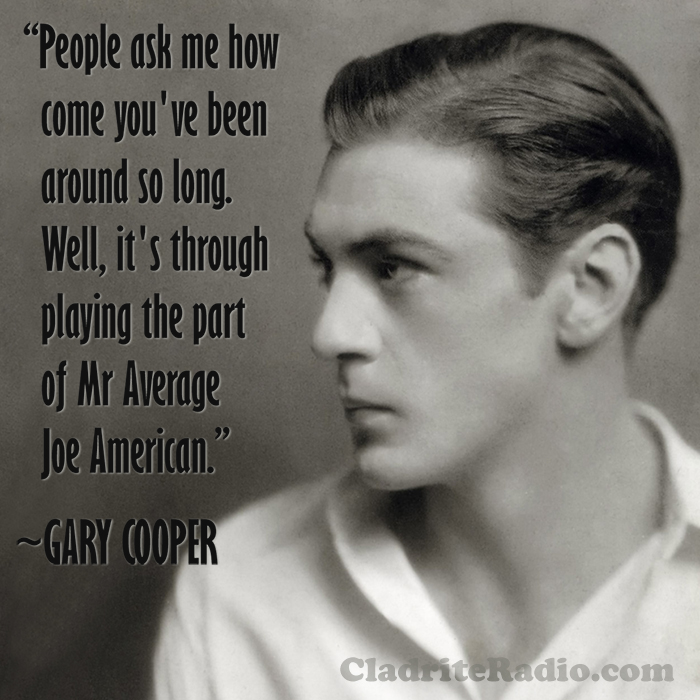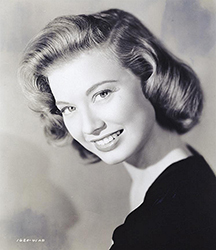 If you think you’ve seen every classic Christmas picture (and most of them one too many times, at that), you’ll be pleasantly surprised, we hope, to learn of one that’s flown under the radar of many a classic movie buff.
If you think you’ve seen every classic Christmas picture (and most of them one too many times, at that), you’ll be pleasantly surprised, we hope, to learn of one that’s flown under the radar of many a classic movie buff.
Remember the Night (1940) was the last movie Preston Sturges wrote before moving into the director’s chair with The Great McGinty (1940). Mitchell Leisen directs here, and though Sturges was said to have been disappointed with Leisen’s efforts, it’s hard to imagine why. It’s a terrific picture, one that should be every bit the holiday favorite that pictures such as It’s a Wonderful Life, Miracle on 34th Street, The Shop Around the Corner, and others have become.
Remember the Night features Fred MacMurray as an ambitious assistant D.A. in NYC who finds himself with shoplifter Barbara Stanwyck on his hands because he has asked for a delay in her trial, so as to avoid the jury feeling any holiday-inspired sympathy for her.
It soon comes out that both the D.A. and the dame are Hoosiers, so she accompanies him on a road trip to visit their respective families. Stanwyck’s brief visit with her mother doesn’t go so well, though, so she sticks with MacMurray, whereupon romance and laughs ensue.
Remember the Night is plenty sentimental enough to qualify as a holiday classic, but like It’s a Wonderful Life, it’s got a dark side, too, delivered with gimlet-eyed bite. Apart from a brief appearance by regrettably stereotypical Black valet character, played by Fred Toones, who does his best with what he’s given, it’s well night perfect.
This post was first published in slightly different form on December 6, 2013.



